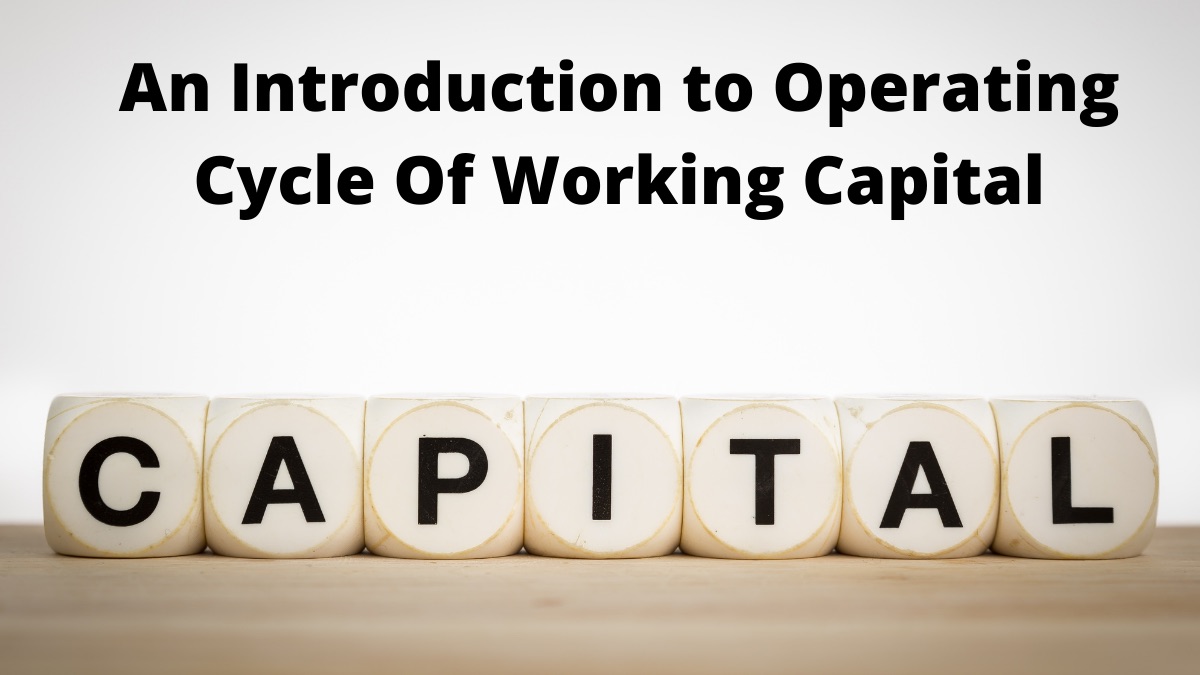Operating Cycle of Working Capital: One of the reasons for business failure is the inability to understand cash flow and manage it effectively. Every business owner must know how to control how money flows in and out of their company and ensure that as much of it is flowing into the business’ reserves as possible.
One of the indicators that are used to determine cash flow health is the working capital cycle. Its status, whether it is positive or negative, can help an entrepreneur determine if the business has problems in cash flow and if financing is needed to correct it. The operating cycle of working capital also tells the proprietor that the business is having short-term liquidity problems.
What Is a Working Capital Cycle?
The working capital cycle is simply the amount of time that your business requires to convert tied-up revenues into real cash. For instance, if your business offers invoices to customers, your working capital cycle indicates the number of days that you would be able to turn those invoices into real cash and settle existing liabilities.
The length of the cycles has a direct impact on your cash flow management. Longer working capital cycles, for example, may leave a significant gap in the company’s ability to keep its finances stable. It may run into difficulties repaying debt, or paying its employees their salaries. The most common remedy is to take out a short-term loan, but this could put further pressure on the business’ cash flow.
Advertisement
The working capital cycle has several phases. The actual number of phases varies from business to business, but, in general, the working capital cycle has these four phases:
- Cash
- Receivables, or the time needed for the business to collect payment on invoices
- Inventory, or the number of days for the business to liquidate its stock
- Billing, or the number of days between the due dates of the company’s payables
The working capital cycle is determined by adding the receivables and inventory days and deducting the billing days. The specific formula then is Receivables + Inventory – Billing.
Positive and Negative Cycles
The working capital cycle is the result of a mathematical expression. This means that the working capital cycle may be expressed as a positive or a negative value, much like cash flow. Just like cash flow, a negative working capital cycle may not always be a sign of a problem for the business.
For example, Company A has a receivable cycle of 45 days, an inventory cycle of 30 days, and a billing cycle of only 30 days. Following the formula above, Company A has a positive working cycle of 45 days.
Most working capital cycles are positive, but some companies can have negative working cycles when there are no days in between their receivable and inventory days. This happens mostly to companies that don’t accept credit card payments or do not offer invoices to their customers.
For instance, Company B takes only cash payments and takes up only 15 days to sell off inventory. It also has 30 days in between bills payments. This means a working capital cycle of -15 days. Instead of demonstrating a problem, the working capital cycle in this context demonstrates that the business has 15 days to manage and maximize its cash flow before it is time to start paying obligations.
On the other hand, Company A takes 45 days to generate the cash needed to repay its obligations within 30 days. This indicates a 15-day gap in the cash flow, which could indicate that Company A is having trouble meeting the 30-day deadline and may need to finance its invoices to get advance cash.
How to Improve Your Working Capital Cycle
The most immediate method of shortening the working capital cycle is to receive only cash for payments. This, however, has the effect of restricting the business’ clientele or customer base to only those that can pay cash. This is not an option for business-to-business companies since businesses generally don’t pay cash upfront as part of cash flow management.
Here are some ways that a business can shorten the working capital cycle without limiting its customers to cash payments:
Improve on collecting processes
Businesses need to step up their collection efforts if they want to improve both their working capital cycle and cash flow. A robust collection process ensures that most of its clients are paying their invoices on time.
Look for better inventory deals
Being able to buy raw materials and finished products at cheaper prices allows businesses to put more competitive pricing on their products. This can help to sell off stock faster as well as shorten the Inventory cycle.
Renegotiate longer payment terms
Businesses can give themselves more maneuvering room by renegotiating terms for their accounts payables. The goal is to stretch payment terms. Longer terms give companies more time in between cycles to generate the necessary cash for their obligations.
Just like cash flow, the working capital cycle is an accurate indicator of a business’ financial health. It specifically demonstrates how much time an entrepreneur needs to raise the cash to pay off the company’s bills every month. Every business owner must strive to keep the working capital cycle as short as possible, and that is only possible by improving collection processes, looking for better prices for inventory, and stretching payment terms.
